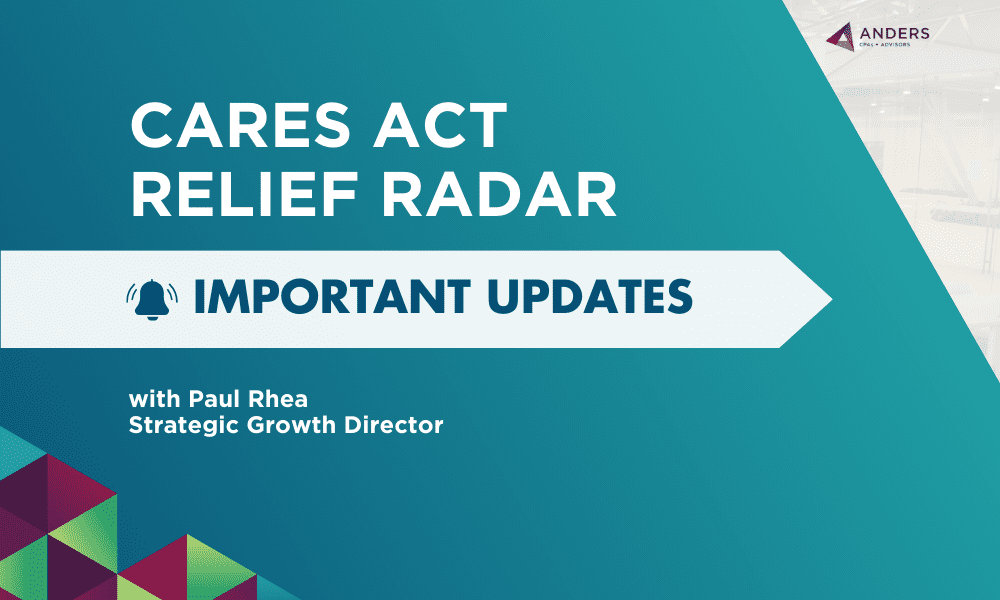Updated 6/8/20
The Paycheck Protection Plan (PPP) is an important aspect of the CARES Act that offers relief for small businesses financially impacted by the COVID-19 pandemic. The program has allocated a total of $510.2 billion of federally guaranteed loans, and qualified small businesses can receive up to $10 million. These loans are administered through the SBA 7(a) loan program and eligible for loan forgiveness. Below we dive into the details of the PPP.
It’s important to note that changes are evolving rapidly with the CARES Act and PPP. We will continue to update this post as needed.
Applying for and Repaying the Paycheck Protection Program
You can apply for the program through any existing SBA 7(a) lender or through any federally insured depository institution, federally insured credit union, or Farm Credit System institution that is participating. Other regulated lenders will be available to make these loans once they are approved and enrolled in the program. You should consult with your local lender on if they are participating.
Lenders are able to start processing loans on April 3, 2020 and the Paycheck Protection Program will be available through August 8, 2020. We recommend that you contact your lender and work with them to apply as soon as possible.
Below are additional details about the loans:
- Loans received after June 5, 2020 will have a 5 year term. Loans existing prior to the Paycheck Protection Flexibility Act may be modified from 2 years to 5 years at the discretion of your lender
- Interest rate is 1%
- The first loan payment can be deferred for 6 months although interest will still accrue during the deferment period
- No collateral or personal guarantees are required
- Neither the government nor lenders will charge small businesses any fees
Eligibility for the Paycheck Protection Program
In order to be eligible to apply for the PP loan, you have to meet the following requirements:
- A small business with less than 500 employees (including employees who are full-time, part-time, or have any other status)
- A small business that otherwise meets the SBA’s size standard
- A 501(c)(3) with fewer than 500 employees
- An individual who operates as a sole proprietor or an independent contractor
- An eligible self-employed individual who regularly carries on any trade or business
- Veterans Organizations and Tribal business concerns that meet the SBA size standard
There are few exceptions to the eligibility requirements above:
- For an organization that falls in the accommodation and food services sector (NAICS 72), the 500 employee size test is applied on a per location basis
- If an organization is a franchise or has received financial assistance from Small Business Investment Company programs, the above eligibility rules do not apply
Calculating Your Loan Amount
PPP loans are available up to 2.5 times the borrower’s average monthly payroll costs, based on last 12 months, not to exceed $10 million. The following costs are included in the monthly payroll costs:
For employers:
- Salaries wages, commission, or similar compensation
- Cash tips or equivalents
- Vacation, parental, family, medical, or sick leave
- Allowance for dismissal or separation
- Group health care benefits, including insurance premiums
- Retirement benefits
- State and local taxes on employee compensation
For Sole Proprietors / Independent Contractors / Self-Employed Individuals – Sum of:
- Wage
- Commission
- Income
- Net earnings from self-employment
- Similar compensation that is not more than $100,000 in one year, as prorated for the covered period
The following costs are NOT included in monthly payroll costs:
- Compensation of an individual employee in excess of $100,000 which includes wages, healthcare benefits, and retirement benefits, as prorated for the period February 15 to June 30, 2020
- Payroll taxes, railroad retirement taxes, and income taxes
- Any compensation paid to employee whose principal place of residence outside of the United States
- Qualified sick leave and qualified family leave wages for which credit is allowed under the Families First Coronavirus Response Act
The maximum loan amount is calculated as:
Sum of Included Payroll Costs – Sum of Excluded Payroll Costs = Payroll Costs
Payroll Costs (from above) x 2.5 = Maximum Loan Amount
Loan Forgiveness
Borrowers are eligible for loan forgiveness if they use the loan proceeds for allowable expenses as listed in the CARES Act. Those allowable expenses include:
- Payroll costs (as calculated above)
- Interest on mortgage obligations
- Rent
- Utilities (electricity, gas, water, transportation, telephone, or internet)
- Additional wages paid to tipped employees (if applicable)
Employers should be aware that their loan forgiveness amount is subject to reduction if they do not meet the reduction in employees and reduction in salary tests.
- Number of employee test – The amount of loan forgiveness is reduced if the average number of full-time employees is less than the average amount before the loan origination date.
- Salary reduction test – The amount of loan forgiveness is reduced if an individual’s salary has been reduced by more than 25% of their salary prior to the loan origination date.
If by December 31, 2020 employers eliminate the reduction in full-time employees or employee salaries that occurred between February 15, 2020 through April 26, 2020, then there will be no reduction of loan forgiveness.
Documents Needed to Apply for the PPP
Documentation will vary by lender, but you should at minimum gather the following:
- Payroll information
- 2019 payroll reports
- 2019 Quarterly 940, 941, or 944
- W2s for all employees
- Reports for vacation, parental, family, medical, or sick leave paid to employees
- 1099s for independent contractors
- Documentation for group health benefits paid by the employer
- Documentation for retirement benefits paid by the employer
- Current organizational documents – bylaws, articles and operating agreements
Actions to Take
It’s important to work closely with your banker on how to move forward with the PPP process and application. The program is still evolving, so expect changes throughout the process.
Our advisors are closely following COVID-19 relief efforts and will continue to publish insights to keep you informed about potential business impacts and benefits. Visit our COVID-19 Resource Center for more news, tools and insights you need to know in these uncertain times.
All Insights





